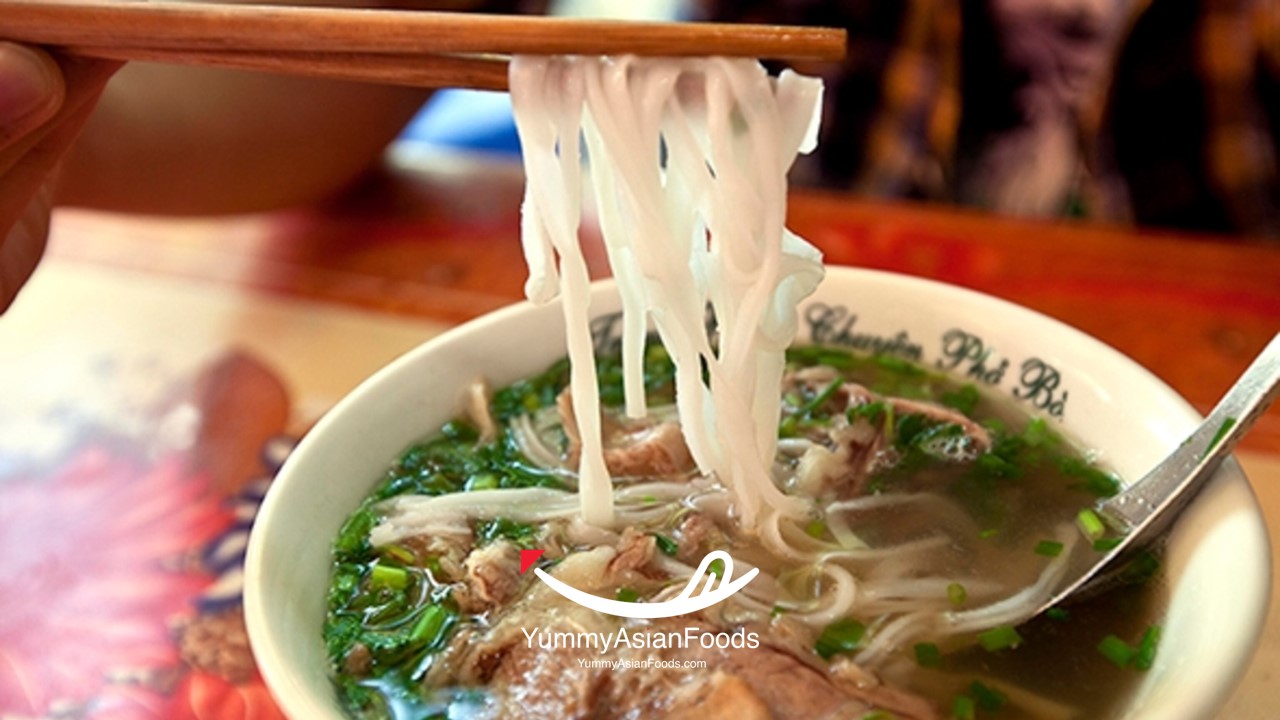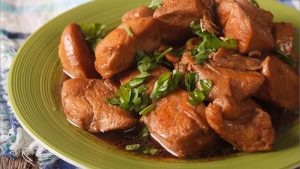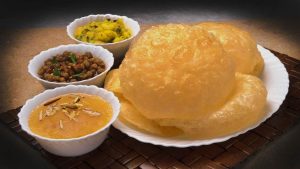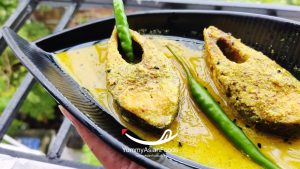Table of Contents
ToggleWith its rich history and complex flavors, Vietnamese pho (noodle soup) stands as a testament to Vietnam’s culinary heritage. From humble beginnings as street food sold by vendors during breakfast on every corner to now gracing menus in high-end restaurants across the globe, pho has undoubtedly earned its place as one of Vietnam’s most cherished dishes. Join us on a culinary journey as we break down the process into easy-to-follow steps that will have you savoring your own homemade bowl of authentic pho in no time. Get ready to immerse yourself in the fragrant world of Vietnamese cuisine and master the art of cooking pho with our comprehensive guide.
What is Vietnamese Pho?
Imagine a steaming bowl of Vietnamese Pho, a quintessential Vietnamese noodle soup that enchants your senses with its aromatic broth and tender noodles. This beloved dish is more than just a meal; it’s a cultural experience that symbolizes the heart and soul of Vietnamese cuisine. The key to authentic pho lies in the carefully crafted broth, made by simmering beef bones and aromatic spices for hours to achieve a rich and complex flavor profile.
Layered with thinly sliced beef or chicken, fresh herbs like Thai basil and cilantro, crunchy bean sprouts, zesty lime wedges, and fiery chili peppers, Pho offers a symphony of textures and flavors in every spoonful. The interplay of savory, sweet, sour, and spicy elements creates a harmonious balance that keeps you coming back for more. Whether enjoyed on bustling streets in Hanoi or savored at home with loved ones, pho transcends mere sustenance; it represents tradition upheld through generations of culinary craftsmanship.
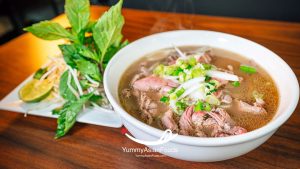
How to Cook Vietnamese Pho?
The key to cooking authentic Vietnamese pho lies in achieving a rich, flavorful broth. Start by simmering beef bones with aromatic spices like star anise, cinnamon, and coriander until they release their deep flavors. This slow process allows the ingredients to meld together, creating a complex base for your soup.
While the broth simmers, focus on preparing the rice noodles and fresh garnishes. Rice noodles should be cooked separately and added to the bowl at serving time to prevent them from becoming mushy. Fresh herbs like Thai basil, cilantro, and bean sprouts provide a burst of freshness that balances out the rich broth’s intensity. Finally, customizing your pho with condiments like hoisin sauce, Sriracha, and lime juice adds layers of flavor that elevate this simple soup into a culinary masterpiece.
By following these steps and taking your time to build layers of flavor in each component of your pho, you’ll be able to replicate the authentic taste of this beloved Vietnamese dish right in your own kitchen. Embrace the artistry of balancing flavors and textures while savoring each spoonful—every bite is a journey through Vietnam’s vibrant culinary landscape.
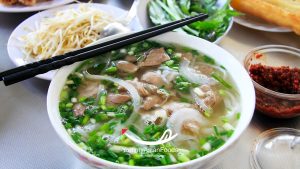
Here are 4 simple steps to cook Vietnamese Pho:
Step 1: Gather Ingredients: List key ingredients needed for Vietnamese Pho
The key ingredients for making authentic Vietnamese pho are crucial to capturing the traditional flavors of this beloved dish. The first item on your shopping list should be high-quality beef bones. These bones form the rich and flavorful base of the broth, so look for a mix of marrow and knuckle bones for the best results. Next, you’ll need a selection of aromatic spices, such as star anise, cinnamon sticks, cloves, and coriander seeds. These spices infuse the broth with a warm and complex flavor profile that is characteristic of pho.
Additionally, don’t forget to garnish your pho bowl with fresh herbs like cilantro, Thai basil, and green onions at serving time. The freshness of these herbs adds a burst of color and fragrance to the dish while providing a contrast in texture against the tender noodles and beef slices. Finally, rice noodles are an essential component that gives Pho its signature slurp-worthy appeal. Opt for flat rice noodles in various widths depending on your preference for noodle thickness; thinner noodles tend to absorb more broth, while wider ones offer a chewier bite experience. In summary, assembling these key ingredients is where the magic truly starts in creating an unforgettable bowl of Vietnamese pho.
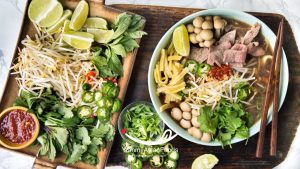
Step 2: Prepare Broth: Boil bones, onion, and spices
As the broth simmers, it releases a tantalizing aroma that fills the kitchen with warmth and comfort. The slow boiling process allows the flavors of the bones, onion, and spices to meld together, creating a rich and fragrant base for the pho. Each ingredient plays a crucial role in elevating the broth to its full potential—the bones impart depth, the onion adds sweetness, and the spices infuse a subtle complexity.
Moreover, preparing this essential component of Vietnamese pho requires patience and attention to detail. The gentle bubbling of the pot beckons you to slow down and savor each moment of creation. It’s not just about boiling ingredients; it’s about coaxing out every ounce of flavor from these humble components to craft a broth that tells a story of tradition and craftsmanship. This step sets the stage for an authentic dining experience that transports you to bustling streetside eateries in Vietnam with each comforting sip.
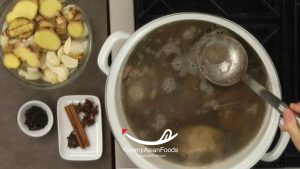
Step 3: Cook Noodles and Beef: Soak noodles; cook beef slices briefly
Once the noodles have softened from soaking, it’s time to move on to cooking the beef slices. The key here is to briefly cook the beef in order to achieve that perfect balance between tender and flavorful. By cooking the beef slices only momentarily, you ensure they remain juicy and retain their natural savory essence.
This step is crucial to elevating the overall experience of your Vietnamese pho. The brief cooking time allows for the meat’s texture to complement the softness of the noodles, creating a harmonious blend of flavors with each spoonful of broth. Perfecting this step will result in a bowl of Pho that not only delights your taste buds but also showcases your skill in mastering this beloved Vietnamese cuisine staple.
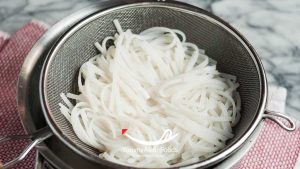
Step 4: Assemble and Serve: Arrange noodles, beef, herbs, broth
Now comes the moment of truth—assembling and serving your bowl of Vietnamese pho. Begin by arranging the cooked rice noodles at the bottom of a deep soup bowl, creating a sturdy foundation for flavors to come. Next, delicately place the tender slices of beef on top, allowing their richness to seep into the dish’s essence. As you lovingly sprinkle fresh herbs over this creation, envision a burst of vibrant flavors dancing on your palate with each spoonful taken.
The final touch lies in ladling steaming hot broth into the bowl, letting its aromatic essence envelop every ingredient within. This step is not just about putting food together; it’s an art form that combines textures, colors, and tastes in perfect harmony. As you prioritize presentation and flavor balance during this assembly process, remember that each element plays a crucial role in elevating your culinary experience to new heights, which is essential to honing it as a chef or enthusiast.
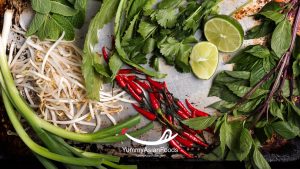
The Origins of Vietnamese Pho
Originating in the early 20th century in northern Vietnam, Vietnamese pho is a soul-warming dish that has captured the hearts of food lovers worldwide. This humble noodle soup has deep roots in Vietnamese culture and is believed to have evolved from French and Chinese culinary influences blended with local ingredients. The key to a delicious bowl of pho lies in the broth—simmered for hours with aromatic spices like star anise, cinnamon, and ginger, it creates a fragrant symphony of flavors.
Pho’s journey from its modest beginnings on the streets of Hanoi to becoming a beloved global comfort food exemplifies Vietnam’s rich culinary history. Legend has it that soldiers returning home after the French colonization period introduced pho to southern Vietnam, where it gradually took on its distinct flavor profile with regional variations. Today, this iconic dish symbolizes Vietnamese identity and community spirit, bringing people together around steaming bowls of slurp-worthy noodles topped with fresh herbs and tender meat slices.
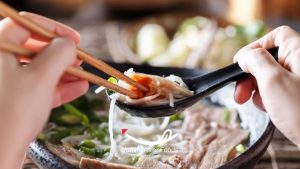
Variations of Vietnamese Pho: Regional differences and modern adaptations
One of the most fascinating aspects of Vietnamese pho is how it varies across different regions of Vietnam. In the north, traditional pho tends to have a clearer broth and a more subtle flavor profile, often relying on fresh herbs and minimal seasoning. Moving southwards, you’ll find a richer and sweeter broth packed with fragrant spices like star anise and cinnamon.
In recent years, modern adaptations of pho have emerged, blending traditional techniques with contemporary culinary trends. Chefs around the world are experimenting with unique ingredients and flavor combinations to put their own spin on this beloved dish. From vegan versions using mushrooms and vegetable broths to fusion bowls combining elements from other cuisines, the possibilities for Pho are truly endless in today’s culinary landscape.
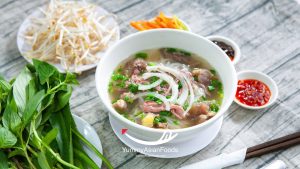
Serving: Best ways to serve and garnish Vietnamese Pho
Serving Vietnamese pho is an art in itself, as it involves a careful balance of flavors and presentation. One of the best ways to serve this iconic dish is by arranging all the toppings neatly on a plate or tray, allowing diners to customize their pho according to their preferences. Fresh herbs like Thai basil, cilantro, and mint should be displayed prominently for that burst of freshness and aroma.
When it comes to garnishing Vietnamese pho, simplicity is key. A squeeze of lime over the steaming bowl not only adds a tangy brightness but also enhances the overall flavor profile. Additionally, thinly sliced chili peppers can be added for those who seek a spicy kick in their broth. Remember, garnishes should complement the rich broth without overpowering its delicate balance of flavors; less is often more when it comes to Pho garnishes.
The Global Popularity of Vietnamese Pho
The global popularity of Vietnamese pho can be attributed to its harmonious blend of flavors, aromatic herbs, and comforting broth. What sets Pho apart is its versatility. From street food stalls in Vietnam to high-end restaurants around the world, this dish transcends boundaries and unites people through a shared love for its soul-warming goodness.
Food enthusiasts worldwide flock to savor a steaming bowl of pho for its complexity and simplicity. The delicate balance of savory beef or chicken broth, tender rice noodles, and an array of fresh herbs creates a symphony of flavors that tantalizes taste buds. Moreover, the rise of cultural awareness and culinary exploration has propelled Vietnamese pho into the limelight as a cherished symbol of authenticity and tradition in a rapidly evolving gastronomic landscape.
Summing Up: Enjoy the Flavors of Authentic Vietnamese Pho
In conclusion, savoring the flavors of authentic Vietnamese pho is more than just enjoying a meal; it’s about embracing a rich culinary tradition that has been passed down through generations. Each steaming bowl tells a story of Vietnam’s history and culture, encapsulating the diverse flavors and aromas that make it one of the most beloved dishes in the world.
By taking the time to cook Vietnamese pho from scratch using fresh herbs, spices, and quality ingredients, you are not only treating your taste buds but also honoring the artistry that goes into creating this iconic dish. From the delicate balance of savory broth to the textures of tender meat and chewy noodles, every spoonful offers a symphony of taste sensations that will transport you to the bustling streets of Hanoi or Ho Chi Minh City. So, next time you crave a comforting bowl of warmth and flavor, remember to slow down, appreciate each bite, and truly enjoy the essence of authentic Vietnamese pho.


